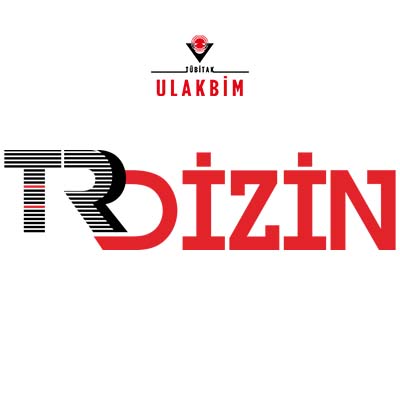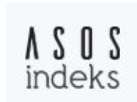Ortaokul 5. ve 8. Sınıf Türkçe Ders Kitaplarındaki Hikâye Edici Metinlerde İleti Ögesinin İncelenmesi
DOI:
https://doi.org/10.15659/jancr.v8i2.165Anahtar Kelimeler:
Hikâye edici metin- ileti- okuduğunu anlama- eleştirel okuma- analitik okumaÖzet
Bu araştırmanın amacı, ortaokul beşinci ve sekizinci sınıf Türkçe ders kitaplarında yer alan hikâye edici metinlerde ileti ögesinin nasıl verildiğini incelemektir. Gelişmiş toplumlar incelendiğinde modern birey olmanın başlıca şartlarından birinin güncel durumları ve sorunları iyi anlayarak bunlara uyum sağlayabilme yeteneği olduğu görülmektedir. Bu uyum sağlama süreci ise bireyin üst düzey düşünme becerilerini etkili bir şekilde özümseyebilmesi ile sağlanmaktadır. Modern birey, okuduğu metinleri analitik ve eleştirel okuma becerileri ile ele alabilen ve metnin iletisini bulabilen bireydir. Bu noktada metnin dokusuna işlenmiş iletilerin okuyucuya nasıl verilmesi gerektiği de önem arz etmektedir. Çalışmada literatür taraması modeli kullanılmıştır. Alanda yapılan çalışmalar incelenmiş ve araştırmacıların iletiyi doğrudan ileti ve dolaylı ileti başlığı altında sunduğu göze çarpmıştır. Ancak bu sınıflandırmaların hikâye edici metinleri oluşturan çatışma, karakter, zaman ve mekân gibi ögeleri göz ardı ettiği göze çarpmış, iletinin bu ögeler aracılığıyla sunulduğunu ortaya koyan bir sınıflandırmanın eksikliği hissedilerek yeni bir sınıflandırmaya gidilmiştir. Çalışmada alanda bu yönde bir eksiği kapatmaya yönelik bir sınıflandırma ortaya konmuş ve bu sınıflandırmadan hareketle belirtilen ders kitaplarındaki iletiler incelenmiştir.
Referanslar
Akçay, S. (2015). Samed Behrengi’nin hikâyelerindeki eğitsel iletiler üzerine bir araştırma, (Yüksek Lisans Tezi, İstanbul Aydın Üniversitesi Sosyal Bilimler Enstitüsü).
Aksan, D. (2000). Her yönüyle dil ana çizgileriyle dil bilim. Ankara: Türk Dil Kurumu Yayınları.
Arıcı, A. F. (2018). Okuma eğitimi. Ankara: Pegem Atıf İndeksi.
Ay, Ş. (2005). Eleştirel düşünme öğretimi ve Bloom'un aşamalı sınıflaması. Abant İzzet Baysal Üniversitesi Eğitim Fakültesi Dergisi, 5(2), 165- 173.
Babacan, M. (2009). Yazılı ve sözlü anlatım: Kompozisyon bilgileri. İstanbul: Akademik Kitaplar.
Beyreli, L., Celepoğlu, A., Çetindağ, Z. (2017). Metin türleri, Yazılı ve Sözlü Anlatım (s.108-129) içinde, Ankara: Pegem Akademi.
Biancarosa, C. ve Snow, C. E. (2006). Reading next—A vision for action and research in middle and high school literacy: A report to carnegie corporation of new york (2nd ed.). Washington, DC: Alliance for Excellent Education.
Bulut, Y. ve Yıldız, N. Yazılı Anlatım ve Türleri (öykü/hikâye ve roman). Erişim Adresi: https://turkdili.marmara.edu.tr/dosya/turkdili/TRD.122%20Bahar%20D%C3%B6nemi%20Ders%20%C4%B0%C3%A7erikleri/TRD122-01.%20%C3%9Cnite.pdf
Cesur, E. ve Baş, B. (2015). Mavisel Yener’in çocuklara yönelik öykülerindeki eğitsel iletiler üzerine bir araştırma. Ana Dili Eğitimi Dergisi, 3(3), 64-76.
Cihangir, A. ve Demir, A. (2023). Ortaokul Türkçe ders kitaplarındaki hikâye edici metinlerde ileti ögesi, Yüksek Lisans Tezi, Başkent Üniversitesi Eğitim Bilimleri Enstitüsü, Ankara.
Çağlayan, A. (2013). Ahlak pusulası, ahlak ve değerler eğitimi. İstanbul: DEM Yayınları.
Çetindağ, Z. (2017). Okuma. Beyreli, L. Ve Çetindağ, Z. (Ed.), Yazılı ve sözlü anlatım. Ankara: Pegem Akademi
De Beaugrande, A. ve Dressler, W. U., (2002) Introduction to text linguistic, London: Longman.
De La Garanderie, A. (1990). Pour une pédagogie de l'intelligence, Paris: Le Centurion.
Demirel, M. (1992). Temel boyutlarıyla okuduğunu kavrama süreci. Hacettepe Üniversitesi Eğitim Fakültesi Dergisi, 8, 325-334.
Demirel, Ö. (2010). Öğretim ilke ve yöntemleri-öğretme sanatı. Ankara: Pegem Yayınları.
Devellioğlu, F. (2008). Osmanlıca-Türkçe ansiklopedik lûgat, Ankara: Aydın Kitapevi.
Elder, L. ve Paul, R. (2004). The miniature guide to the human mind: How it learns – How it mislearns, ABD: The Foundation for Critical Thinking.
Günay, D. (2003). Metin bilgisi, İstanbul: Multilingual Yayıncılık.
Güneş, F. (2012). Öğrencilerin düşünme becerilerini geliştirme. Türklük Bilimi Araştırmaları, (32), 127-146.
Güneş, F. (2013a). Türkçe öğretiminde metin seçimi, Ana Dili Eğitimi Dergisi, 1(1), 1-12.
Güneş, F. (2013b). Türkçede metin öğretimi yerine metinle öğrenme, Adıyaman Üniversitesi Sosyal Bilimler Enstitüsü Dergisi Türkçenin Eğitimi Öğretimi Özel Sayısı. 6 (11).
Güneş, F., (2021), Düşünme nedir? Nasıl öğretilir?, Eleştirel ve Analitik Düşünme, (2-24) içinde, Ankara: Pegem Akademi.
Helimoğlu Yavuz, M. (2009). Masallar ve eğitimsel işlevleri. İstanbul: Cumhuriyet Kitapları.
Horiba, Y. (2000). Reader control in reading: Effects of language competence, text type, and task, Discourse Processes, 29(3), 223-267. doi: 10.1207/S15326950dp2903_3
Kaplan, K. (2013). Hidayet Karakuş’un roman ve hikâyelerinde yer alan eğitsel iletiler. (Yüksek Lisans Tezi, Afyon Kocatepe Üniversitesi).
Kuşdemir, Y. ve Katrancı, M. (2016). Okumada kaygı ve anlama: Ana fikri bulamıyorum öğretmenim!. Eğitim ve Bilim, 41(183). doi: http://dx.doi.org/10.15390/EB.2016.4951
Nickerson, R. S. (1988). On improving thinking through ınstruction. Review of Research in Education, 15(1), 3–57. doi:10.3102/0091732X015001003
Özdemir, E. (1983). Okuma sanatı. İstanbul: Varlık Yayınları.
Özdemir, E. (2005). Eleştirel okuma. İstanbul: Bilgi Yayınevi.
Özden, Y. (2005). Öğrenme ve öğretme. Ankara: Pegem A.
Özkan, E. ve Başkan, A. (2020). Okuma ve söz varlığı ilişkisi. Kaya, M. ve Kardaş, M.K. (Ed.), Okuma Eğitimi, Ankara: Pegem Akademi.
Peregoy, S. F., & Boyle, O. F. (2000). English learners reading English: What we know, what we need to know. Theory Into Practice, 39(4), 237-247.
Sever, S. (2017). Çocuk ve edebiyat. (Dokuzuncu baskı). İzmir: Tudem Yayıncılık.
Söylemez, Y. (2018). 2018 Türkçe Dersi Öğretim Programındaki kazanımların üst düzey düşünme becerileri açısından değerlendirilmesi. Atatürk Üniversitesi Türkiyat Araştırmaları Enstitüsü Dergisi, (63), 345-384.
Stevens, R. J., Slavin, R. E., ve Farnish, A. M. (1991). The effects of cooperative learning and direct instruction in reading comprehension strategies on main idea identification. Journal of Educational Psychology, 83(1), 8–16. Doi:10.1037/0022-0663.83.1.8
Stevick P. (2004). Roman teorisi. (S. Kantarcıoğlu, Çev.), Ankara: Akçağ Yayınları.
Temizkan M., Atasoy A. (2014). Türkçe ders kitaplarında yer alan hikâye türündeki metinlerin üst yapı açısından değerlendirilmesi. Uluslararası Türkçe Edebiyat Kültür Eğitim (Teke) Dergisi, 3(3), 210- 237.
TS (2023). Türkçe sözlük. https://sozluk.gov.tr/ (Erişim tarihi: 17 Ekim 2023).
Williams, J. P. (2005). Instruction in reading comprehension for primary-grade students: A focus on text structure. The Journal Of Special Education, 39(1), 6-18.
Yalçın, S. K. ve Şengül, M. (2007). Dilin İletişim Süreci İçerisindeki Rolü ve İşlevleri. Turkish Studies, 2 (2), 749-769.
Yeşilyurt, N. (2018). Ösküs Uul destanında mitik mekân ve gerçek mekân. Çeşm-i cihan. Tarih Kültür ve Sanat Araştırmaları Dergisi E-Dergisi, 5(1), 194-211.
Zıllıoğlu, M. (2007). İletişim nedir?. İstanbul: Cem Yayınevi.
İndir
Yayınlanmış
Nasıl Atıf Yapılır
Sayı
Bölüm
Lisans
Telif Hakkı (c) 2024 Anadolu Kültürel Araştırmalar Dergisi (ANKAD)

Bu çalışma Creative Commons Attribution-NonCommercial 4.0 International License ile lisanslanmıştır.













